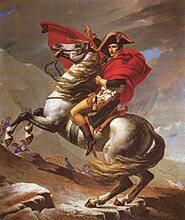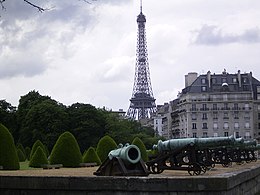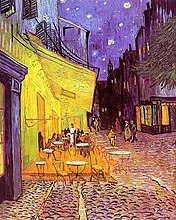ASHS Coursebook: 2ARH (Level 2 Art History)
| [▲] | |
|---|---|
| NCEA Level: | |
| Primary Qualification: | |
| Primary Learning Area: | |
| Date: | 09/11/2017 |
Contents
[hide]What is this course about?
The main theme of this course is Revolution. We begin with the French Revolution of the late 18th century which led, not only to the death of Marie Antoinette and Louis XVI, but triggered a period of radical social, political and philosophical upheaval that would resound through Europe and lead to the shaping of the modern world. In this time, art's role as a powerful tool for propaganda is significant.
Against this tumultuous, exciting background and the further revolutions which followed in France, we will explore a wide range of upheavals such as the development of new styles of painting and sculpture which arose in reaction to the art before them and as a response to what was happening in society. Among these styles are Romanticism, Realism and Impressionism and we will see violent reactions to such art works which were seen as outrageous in their day. Many of those artists whose art sells for millions of dollars in our time were unable to sell their work because of public reaction - Vincent van Gogh and Claude Monet among them.
Revolutionary innovations occured in architecture in buildings such as the Eiffel Tower in Paris and The Crystal Palace in London and a study of several important buildings is part of the course.
We will also examine through art, the depiction of contemporary events of that time, men and women at work and at leisure, and track the advance of modernity through depictions of changes in cities, through the advent of the railway and the development of cafe society.
While the central focus of this course is on Europe in the period from the end of the 18th century through the 19th century, you can also expect to be viewing and discussing New Zealand art throughout the year. We will also visit galleries when appropriate. Two of the assessments in 2017 were based around trips to art sites.
What will I learn?
You will learn to recognise different methods and materials in art making, to closely read art works and understand their underlying meaning, to understand the type of influences that affect how art is made and valued, about the different values that are attached to art, to understand and use the language associated with art, to identify the different styles of artists and time periods. You will also gain confidence in speaking about art and appreciation of its links to other areas of study.
What sorts of things will I do?
You will use a variety of learning strategies to explore and analyse art works and their contexts. You will examine art as projected images, on film, on line and, when possible, on site (we will visit art galleries and sites). In class, you will work independently as well as collaborating with others in pairs and groups.
Contributing to class discussion is important in order to explore and clarify ideas, and you will be expected to visit galleries and read around the areas of study independently to build your knowledge. Keeping an open mind when confronting art and ideas unfamiliar to you, is vital.
Key Dates/Assessments:
| Term 1 | Term 2 | Term 3 | Term 4 |
|---|---|---|---|
| |
|
|
|
Assessment
|
Assessment
|
Assessment
|
Assessment
|
What standards can I enter?
| NCEA Level | Standard Number | Name of standard |
Version Number |
Credits | Reading | Writing | Assessment |
| 2 | AS91180 |
2.1 Examine the effects of formal elements of art works |
2 | 4 |
N | Y | External |
| 2 | AS91181 | 2.2 Examine the meanings conveyed by art works | 2 | 4 | N | Y | External |
| 2 | AS91183 |
2.4 Examine how media are used to create effects in art works |
2 | 4 |
N | N | Internal |
| 2 | AS91185 |
2.6 Communicate a considered response to art works | 2 | 4 |
N | N | Internal |
| 2 | AS91186 |
2.7 Demonstrate understanding of art works in relation to the physical environments |
2 | 4 |
N | N | Internal |
| |
|
Total available credits: | 20 |
|
Vocational Pathways provide a framework for students to show how their learning and achievement is valued in the workplace by aligning learning to the skills needed for industry. Follow this link to see the profile for this course.
Frequently asked questions:
Do I need to know anything about art?
No, you do not. For many students, Level 2 art history is their first real contact with art. You need no previous knowledge of practical art or art history to take this course.
Why is this learning important?
Building an understanding of art enriches our lives, broadens our understanding and empathy with others, and helps develop our conceptual skills. It increases the pleasure we can take in viewing and participating in art, and the knowledge gained and ideas explored are relevant to many other areas of study. Literature, Design and Media are just some of the fields that often draw from the art of the past to express ideas in our own time. Classical architecture, for example, is often referenced in modern buildings while the design of filmmaker Tim Burton's gothic figures and settings owes much not just to Gothic style, but also to German Expressionist art of the early 20th Century.
How is this learning related to future pathways?
Art History continues through Level 3, Scholarship and into tertiary study (It is one of the Table A subjects at Auckland University). It provides knowledge many of you will use in future careers. These careers include journalism, advertising, teaching, furniture design, stage design, interior design, writing, architecture, reviewing, acting, directing, art curating, art conservation, auctioneering, public relations, collecting, antique dealing or restoration, a variety of roles in art galleries and museums, art making, film making, scriptwriting, historian, costume design, publishing, valuation and many more.
Are there costs involved in this course? Class trips may incur transport and entry costs. There will be a charge for course books.


